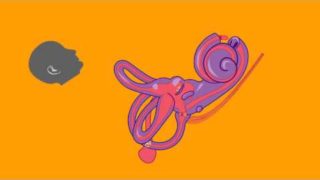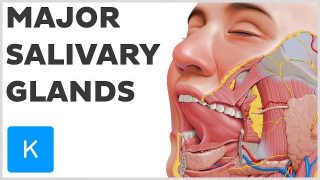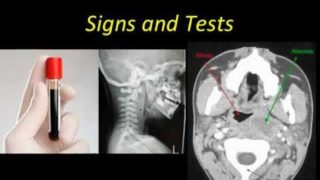Temporomandibular Joint (TMJ) Anatomy and Disc Displacement Animation
TMJ made easy. everything you need to know. This video is available for instant download licensing here: https://www.alilamedicalmedia.com/-/galleries/all-animations/dental-videos/-/medias/4914c51a-95d9-11e3-a15c-0b755686edd1-tmj-anatomy-and-disorder-narrated-video
©Alila Medical Media. All rights reserved.
Support us on Patreon and get FREE downloads and other great rewards: patreon.com/AlilaMedicalMedia
All images/videos by Alila Medical Media are for information purposes ONLY and are NOT intended to replace professional medical advice, diagnosis or treatment. Always seek the advice of a qualified healthcare provider with any questions you may have regarding a medical condition.
The temporomandibular joint -- the TMJ - is the joint between the lower jawbone - the mandible - and the temporal bone of the skull. The TMJ is responsible for jaw movement and is the most used joint in the body. The TMJ is essentially the articulation between the condyle of the mandible and the mandibular fossa - a socket in the temporal bone. The unique feature of the TMJ is the articular disc - a flexible and elastic cartilage that serves as a cushion between the two bone surfaces. The disc lacks nerve endings and blood vessels in its center and therefore is insensitive to pain. Anteriorly it attaches to lateral pterygoid muscle - a muscle of chewing. Posteriorly it continues as retrodiscal tissue fully supplied with blood vessels and nerves.
The mandible is the only bone that moves when the mouth opens. The first 20 mm opening involves only a rotational movement of the condyle within the socket. For the mouth to open wider, the condyle and the disc have to move out of the socket, forward and down the articular eminence, a convex bone surface located anteriorly to the socket . This movement is called translation.
The most common disorder of the TMJ is disc displacement, and in most of the cases, the disc is dislocated anteriorly. As the disc moves forward, the retrodiscal tissue is pulled in between the two bones. This can be very painful as this tissue is fully vascular and innervated, unlike the disc. The movements made by chewing or even talking cause a chronic bruise to the tissue resulting in inflammation and pain.
The forward dislocated disc is an obstacle for the condyle movement when the mouth is opening. In order to fully open the jaw, the condyle has to jump over the back end of the disc and onto its center. This produces a clicking or popping sound. Upon closing, the condyle slides back out of the disc hence another "click" or "pop". This condition is called disc displacement with reduction .
In later stage of disc dislocation, the condyle stays behind the disc all the time, unable to get back onto the disc, the clicking sound disappeared but mouth opening is limited. This is usually the most symptomatic stage - the jaw is said to be "locked" as it is unable to open wide. At this stage the condition is called disc displacement without reduction
Fortunately, in majority of the cases, the condition resolves by itself after some time. This is thanks to a process called natural adaptation of the retrodiscal tissue, which after a while becomes scar tissue and can functionally replace the disc. In fact, it becomes so similar to the disc that it is called a pseudodisc.
Temporomandibular Joint (TMJ) Anatomy and Disc Displacement Animation
Other Videos You Might Like:
Subscribe
Login
2.1K Comments
Newest




